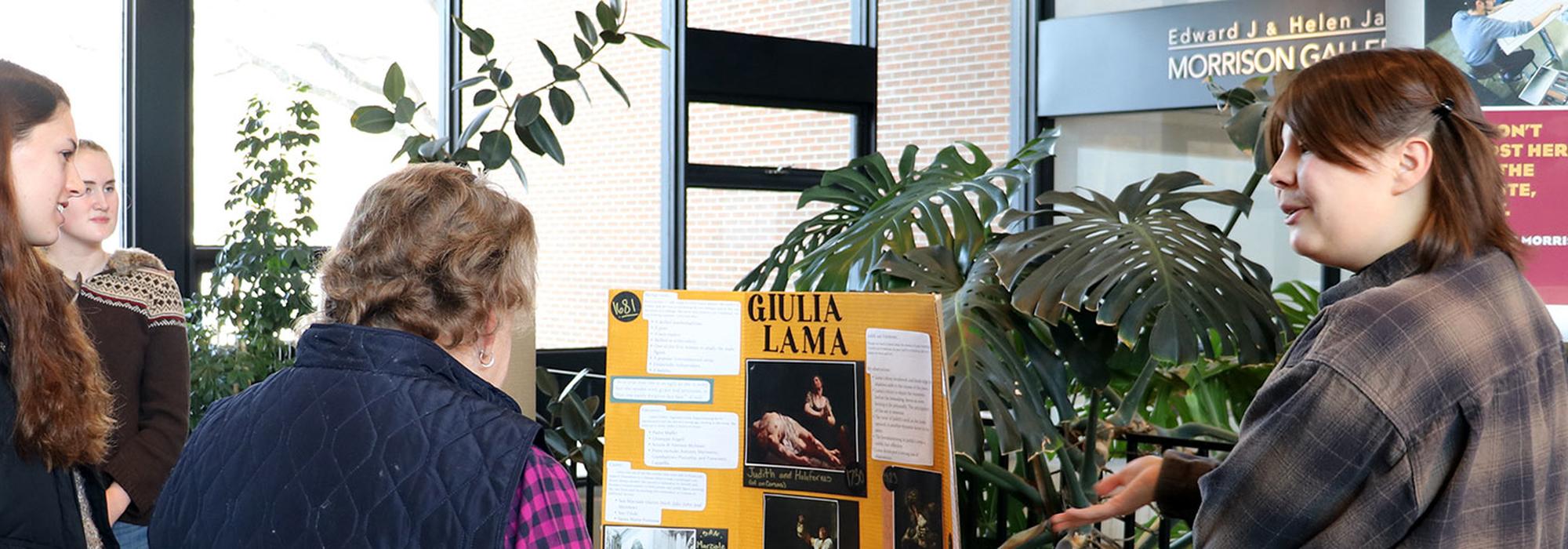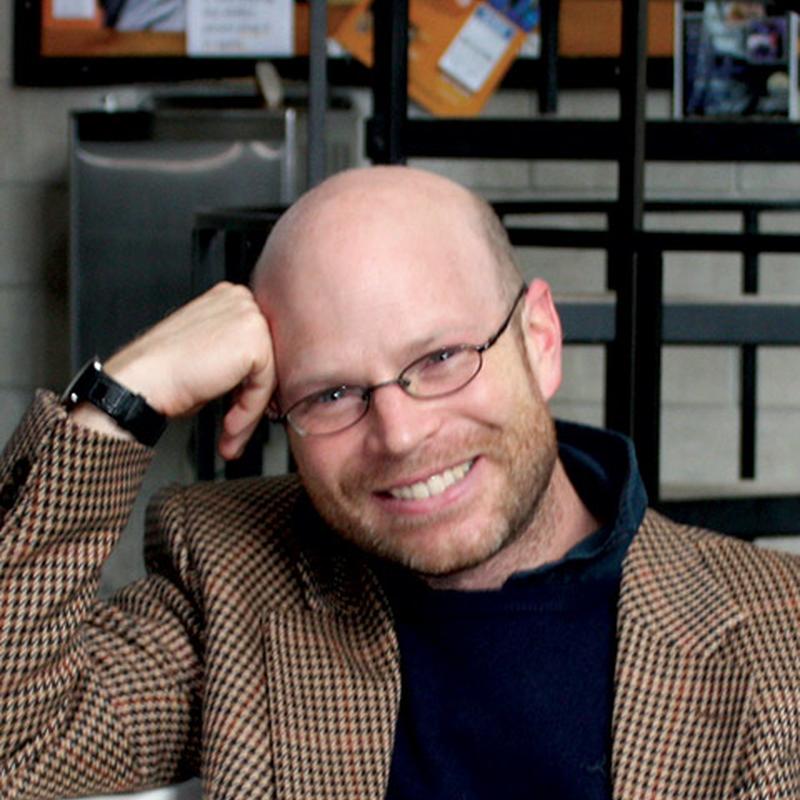Overview
As an art history student, you will work closely with professors to explore the art, artifacts, and visual culture of a wide range of global cultures, from ancient to contemporary, as well as the multiple contexts that shape them. You will also learn intercultural competence and communication, key skills in today's world.
Studying art history will teach you critical thinking and interpretive skills, visual literacy, and how to conduct research and communicate ideas. These skills transfer well to a range of careers and fields of graduate study. UMN Morris art history graduates have pursued higher education and careers in museums, historical societies, libraries, and arts organizations. They are artists, designers, and owners of small businesses.
In the art history program at UMN Morris, learning takes place in small classes, in one-on-one research and work experiences, in study abroad programs, through field trips and guest speaker visits, and through participation in student organizations and government. Art history students are also encouraged to carry out internships with regional and national museums and other organizations.
Art history is interdisciplinary with a broad curriculum that combines visual analysis with other areas of study. This major is a good match to many other disciplines like history; studio art; languages; English; literature, anthropology; political science; philosophy; psychology, sociology, communication, media, and rhetoric. Many art history students double major or pursue minors in other fields of study.
UMN Morris art history professors are active researchers who regularly publish and present their work, and they are excited to mentor you!
Degree Requirements
Student Learning Outcomes
By completing a degree in art history, you will
- gain knowledge and an appreciation of objects of art history, visual culture, and material culture from various traditions and cultures;
- be able to describe, analyze, and interpret objects of art history, visual culture, and material culture using art historical terminology and to articulate their artistic, historical, and/or cultural significance;
- be able to speak about art historical objects and/or literature critically and to make arguments about their meanings and significance;
- be able to write about art historical objects and/or literature critically and to make arguments about their meanings and significance; and
- be able to carry out research-based papers, projects, and activities with the use of primary and secondary art historical sources as well as methodologies.
General Education Requirements
The University of Minnesota and its faculty are committed to providing an education that invites you to investigate the world from new perspectives, learn new ways of thinking, and grow as an active citizen and lifelong learner. The University’s general education requirements are designed to be integrated throughout your four-year undergraduate experience. These courses provide you an opportunity to explore fields outside your major and complement your major curriculum with a multidisciplinary perspective.
Transferring Credit
Careers & Graduate School
Expertise in visual literacy—an ease with visual material and the ability to quickly grasp its message or appeal—will give you professional advantages in almost any field you enter after graduation.
With an art history degree from UMN Morris, you’ll consistently be able to use your skills to work in a broad range of fields. The following are examples of art history-related occupations.
- Archivist
- Art dealer/art sales
- Art gallerist
- Artist/craftsperson/photographer
- Art (history) teacher / professor
- Arts organization administrator or manager
- Conservator
- Editor
- Curator
- Draftsperson
- Graphic or other designer
- Interactive communications software developer
- Interior decorator
- Librarian
- Museum collections registrar, educator, or other museum professional
- Nonprofit organization employee
- Public relations professional
- Small business owner
- Technical writer
Costs & Aid
The University of Minnesota Morris is a national public liberal arts college committed to making a high-quality education available to students from across the country. Expenses for housing, meals, books and supplies, transportation, loan fees, and personal expenditures can vary.
Learn more about the cost of attendance
Use our net price calculator to estimate your cost of attendance
Scholarships
Scholarships are a type of financial aid awarded to you and are often based on specific criteria, such as your major, GPA, or financial need.
Research & Engagement
Pursuing scholarly activities as an undergraduate student will give you a head start on your career or graduate program, helping you advance professionally—before you graduate.
Research
All UMN Morris students are strongly encouraged to pursue opportunities for research. As an art history major, you will be able to work closely with faculty on a research project or scholarly activity. You may also have the opportunity to present on it at local and regional conferences or even have your research published.
Another research option as an art history major is to carry out a directed study in an area of special interest. For this, you will work with art history faculty to help shape a program of study on more focused topics. The following are successful examples of past directed studies.
- Quilting and Its Impact on Women in the U.S., Past and Present
- Notre-Dame of Paris in Text and in Reality (combined with the Morris July in Paris program)
- Contemporary Art in Cameroon (combined with a study abroad program)
- Readings in African and African-American Photography
- Conceptions of Space and Place: The Environment, Land, and Cartography in Art
Engagement
Study Abroad opportunities are available and strongly encouraged. Many art history students have been able to participate in the UMN Morris semester abroad program in Brunnenburg, Italy, as well as the UMN semester abroad program in Florence, Italy. Others have gone farther afield to places like Japan, or have taken advantage of the many summer study abroad programs offered by the wider UMN Morris faculty.
Teaching
Teaching assistantships are available for upper-level students majoring in art history. Students typically assist with introductory core courses. If interested, it’s best to contact the professor teaching the course at least two months before the start of the semester to learn more.
Opportunities for Students
The Undergraduate Research Symposium (URS) offers students an opportunity to present research plus scholarly and creative work. Types of presentations include posters, oral presentations, and short or abbreviated theatrical, dance, or musical performances.
- Creative Activity
- Research
The Undergraduate Research Opportunities Program (UROP) provides University of Minnesota undergraduates from every college, major, and discipline, the opportunity to partner with a faculty member on research or creative projects.
- Creative Activity
- Research
Scholarly Horizons: University of Minnesota, Morris Undergraduate Journal highlights outstanding undergraduate scholarship being done at the University of Minnesota, Morris (UMM). Works may include independent research or creative activity as well as projects or papers from course assignments that significantly moved beyond the course expectations. Submissions are accepted from faculty only and should represent the top level of work seen over the faculty member's career.
- Creative Activity
- Research
The University of Minnesota Morris offers the Morris Student Administrative Fellows program, in which academic and administrative staff select students to serve as teaching assistants to sponsoring faculty and as interns in offices and programs on campus. MSAF students undertake assignments that enhance their intellectual competence, enrich their academic program, or hone their technical skills.
- Creative Activity
- Community Engagement
- Internship
- Morris Student Administrative Fellows (MSAF)
- Student Employment
The University of Minnesota Morris offers the Morris Academic Partnership (MAP) program, in which faculty select academically talented, qualified second-year and third-year students to assist them in scholarly and creative projects. Selected MAP students undertake assignments intended to enhance their intellectual competence and increase their interest in graduate or professional study.
- Creative Activity
- Morris Academic Partnership (MAP)
- Research
- Student Employment
The Edward J. & Helen Jane Morrison Gallery is centrally located on the main floor in the Humanities Fine Arts building. The facility is ranked among the best of galleries on small liberal arts college campuses in the United States, offering the campus and the Morris community exhibits throughout the academic year.
Learn more about the Edward J. & Helen Jane Morrison Gallery
Quick Facts
- Major
- Minor



